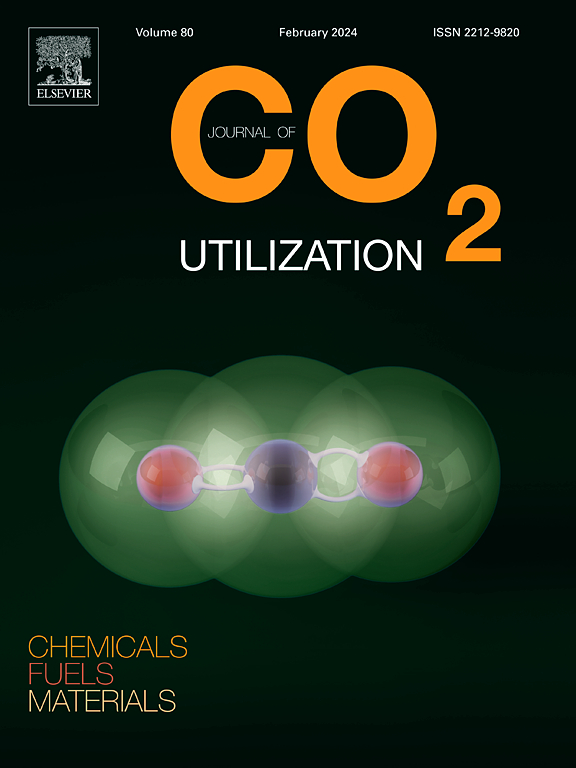利用海水卤水生产Nesquehonite固体和二氧化碳利用
IF 7.2
2区 工程技术
Q1 CHEMISTRY, MULTIDISCIPLINARY
引用次数: 0
摘要
同时利用二氧化碳废液和富二价盐水溶液是应对气候变化挑战的重要机遇。一些作者研究了海水淡化盐水作为二氧化碳利用技术的二价溶液的有前途的来源。然而,盐水中Mg2 +和Ca2+的含量会影响合成化合物的纯度。在这种情况下,本工作首次全面评估了真正高浓度富Mg2+盐溶液(卤水)的直接和间接矿物碳酸化过程,后者是盐厂或蒸发池中海水蒸发过程或脱盐盐水的副产品。为了比较,还对实际海水淡化盐水的间接碳酸化过程进行了探讨。卤水的Mg2+和Ca2+浓度分别为~ 2.00 mol/L和~ 0.004 mol/L,而脱盐盐水的Mg2+和Ca2+浓度分别为~ 0.13 mol/L和~ 0.025 mol/L。在(半)间歇式反应器中进行了常温常压碳酸化试验。卤水中高浓度的Mg2+和几乎没有Ca2+允许(i)生产高纯度的Nesquehonite固体(纯度~ 99 %)和(ii)通过直接碳酸化方法与间接碳酸化方法相比,二氧化碳产量几乎翻了一番(从23 %到37 %)。本文章由计算机程序翻译,如有差异,请以英文原文为准。
Exploitation of seawater brines for the production of Nesquehonite solids and CO2 utilization
The simultaneous utilization of waste CO2 streams and bivalent rich saline solutions is a crucial opportunity to face climate change challenges. Several authors have investigated desalination seawater brines as promising sources of bivalent solutions for CO2 utilization technologies. However, the Mg2 + and Ca2+ content in brines affects the purity of the synthesized compounds. In this context, the present work thoroughly assesses, for the first time, the direct and indirect mineral carbonation processes of real highly concentrated Mg2+-rich saline solutions (bitterns), the latter being the by-products of the evaporation process of seawater or desalination brines in saltworks or evaporative ponds. For comparison, the indirect carbonation process of real desalination brines was also explored. The bittern had Mg2+ and Ca2+ concentrations of ∼2.00 mol/L and ∼0.004 mol/L, while ∼0.13 mol/L and ∼0.025 mol/L were those in the desalination brine, respectively. Carbonation tests were conducted at room temperature and atmospheric pressure in a (semi-)batch reactor. The high concentration of Mg2+ and the almost absence of Ca2+ in the bittern allowed (i) the production of highly pure Nesquehonite solids (purity ∼99 %) and (ii) almost doubling the CO2 yield (from 23 % to 37 %) through the direct carbonation approach against the indirect one.
求助全文
通过发布文献求助,成功后即可免费获取论文全文。
去求助
来源期刊

Journal of CO2 Utilization
CHEMISTRY, MULTIDISCIPLINARY-ENGINEERING, CHEMICAL
CiteScore
13.90
自引率
10.40%
发文量
406
审稿时长
2.8 months
期刊介绍:
The Journal of CO2 Utilization offers a single, multi-disciplinary, scholarly platform for the exchange of novel research in the field of CO2 re-use for scientists and engineers in chemicals, fuels and materials.
The emphasis is on the dissemination of leading-edge research from basic science to the development of new processes, technologies and applications.
The Journal of CO2 Utilization publishes original peer-reviewed research papers, reviews, and short communications, including experimental and theoretical work, and analytical models and simulations.
 求助内容:
求助内容: 应助结果提醒方式:
应助结果提醒方式:


